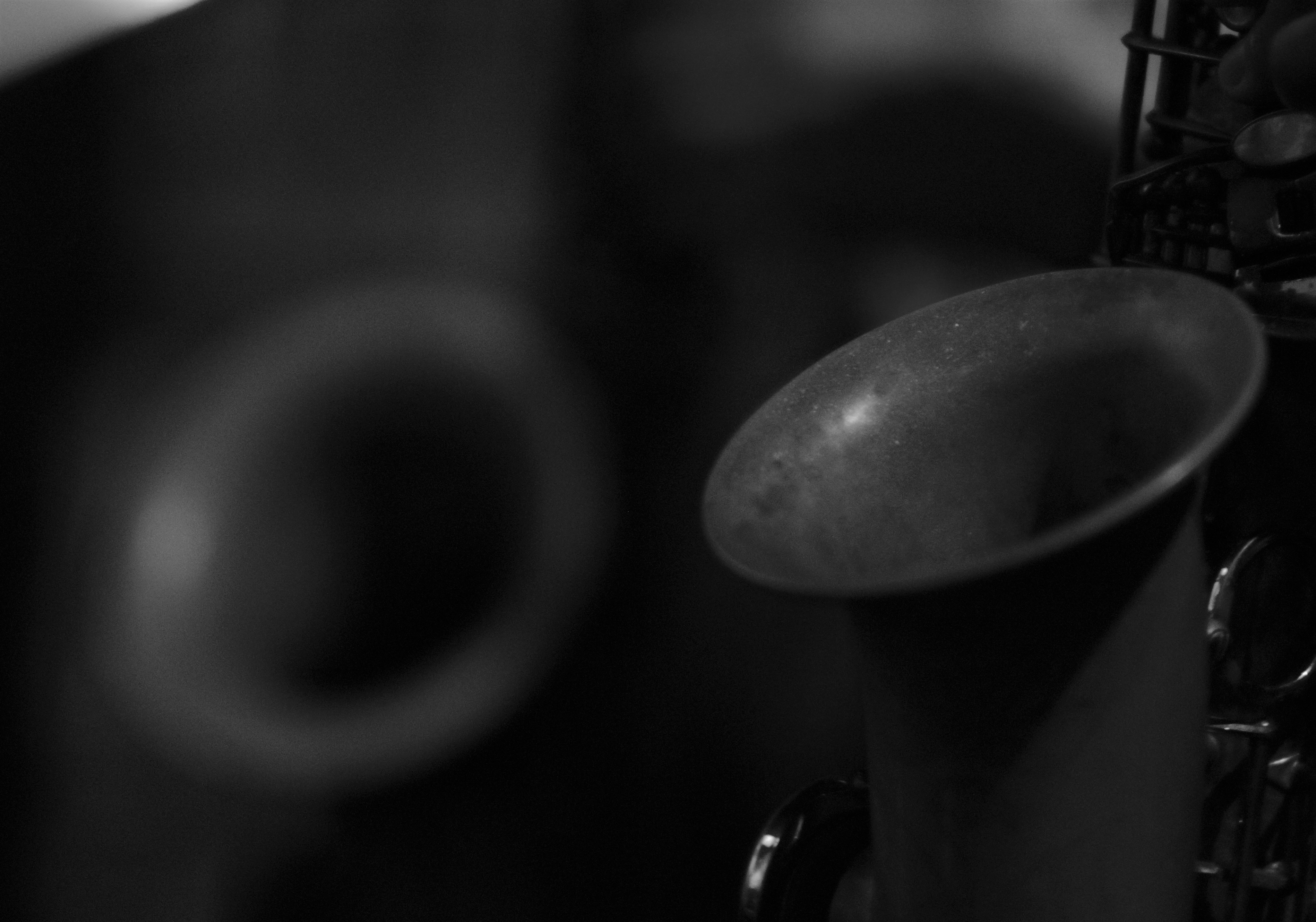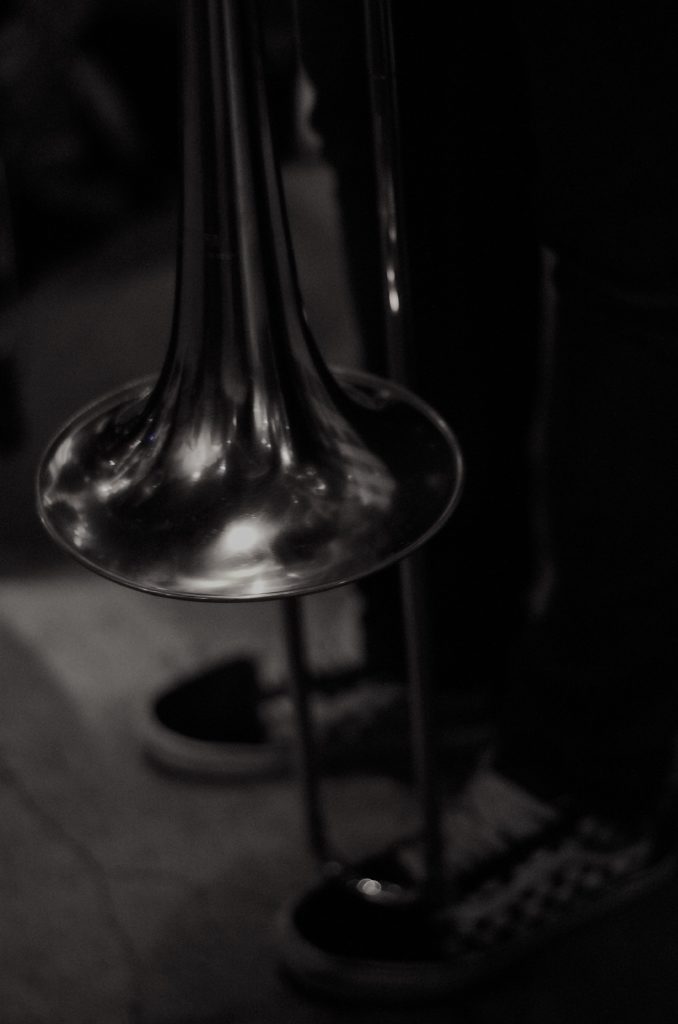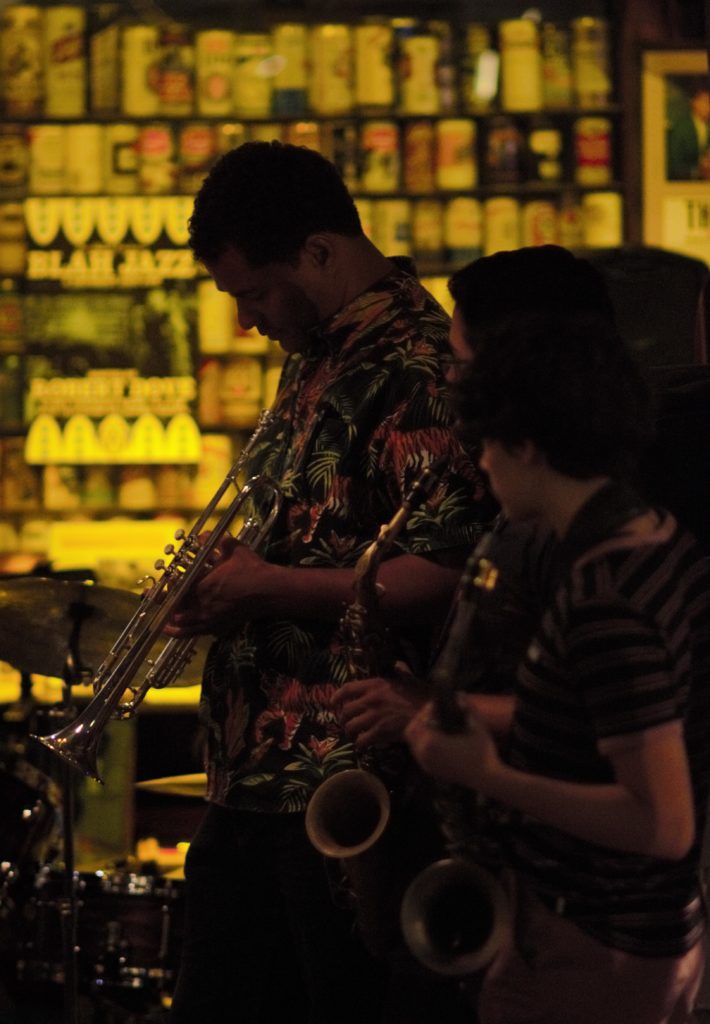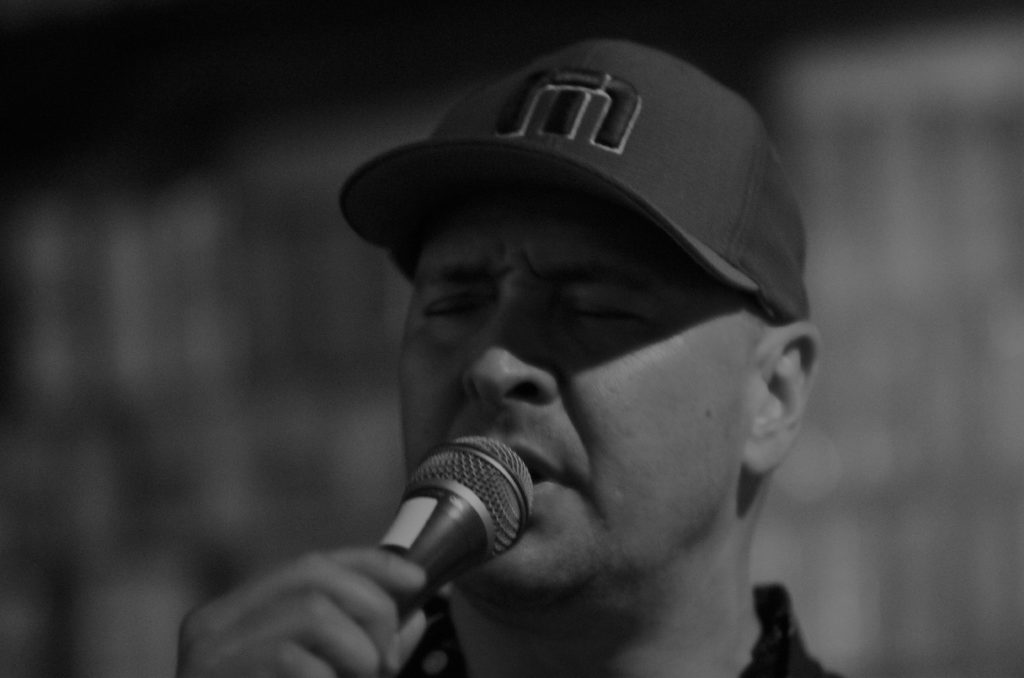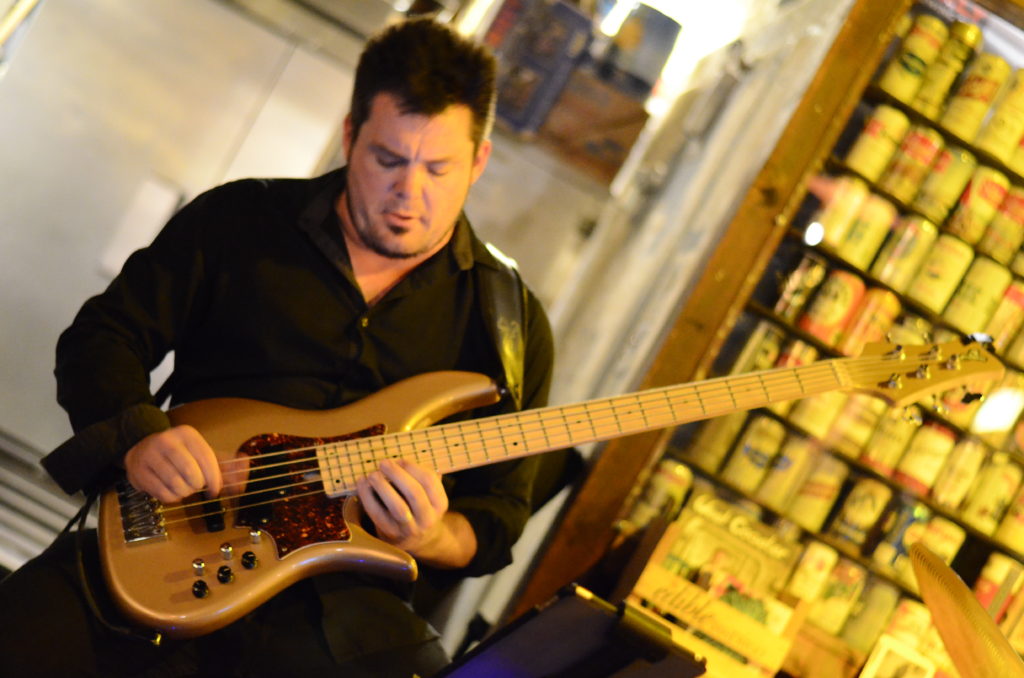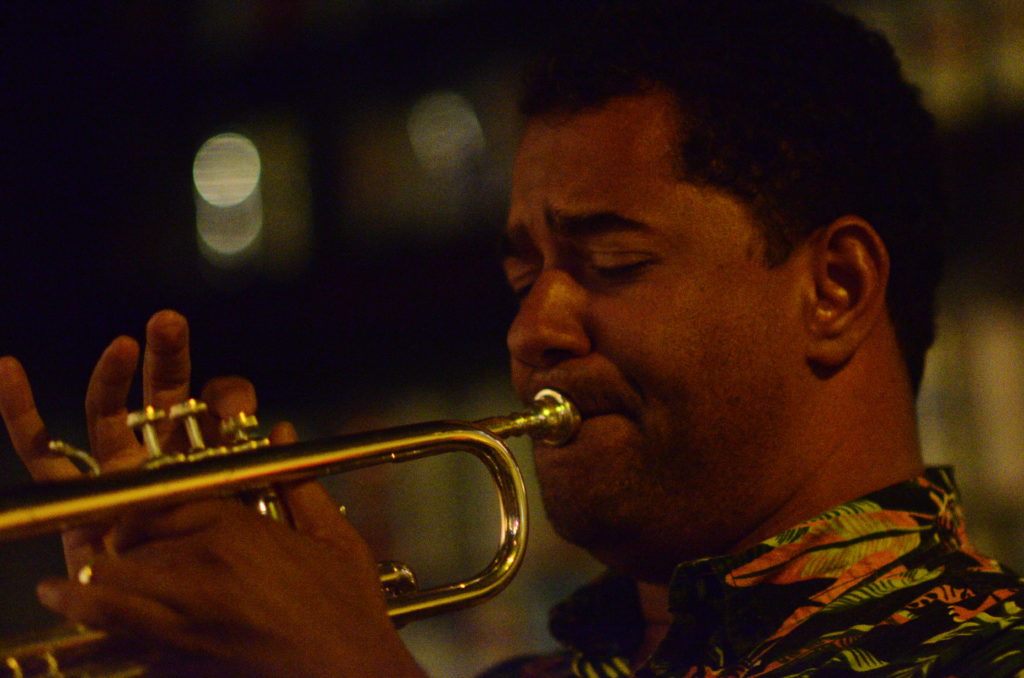** This post was written as an assignment for my Digital Journalism class through UCSD Extension.
The musicians anticipate the countdown, hands twitching above their respective instruments. Robert Dove yells “Here we go!” and sets his saxophone loose. Seamlessly, the others – a piano, standup bass and drums – join in. It’s just after 8pm on a Thursday night at Blind Lady Ale House and a jazz jam blares into the night.
That opening note marks the first time these musicians have played together as a quartet. But band leader Dove had no doubts that their set would be a success. He runs a jam session every week and calls it a laboratory. Teaching pays the bills, but it’s also so much a part of his nature that even his explanation sounds like an SAT question.
“I’ve played with Will (bass) and Bobby (piano),” Dove says, “But they’ve never played together. Will has played with Kana (drums). So I know A and B work with C and C works with D, ergo A=B=C=D. It’s going to work!”
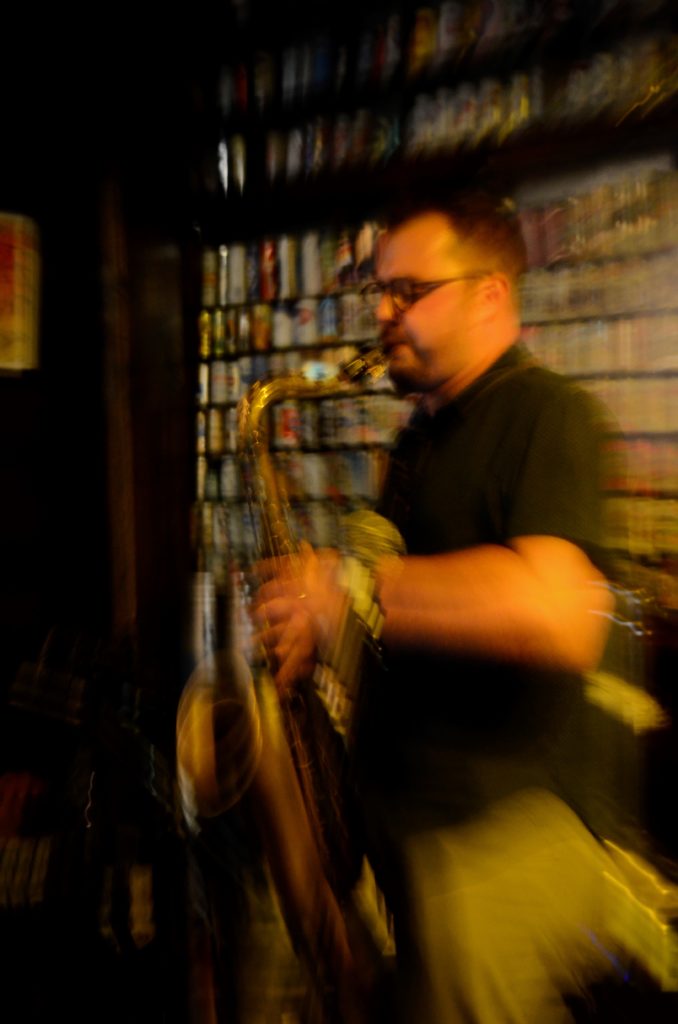
Every Thursday, Dove and his band set up on a stage that is little more than an area made open by the removal of one of the long wooden tables. Blind Lady Ale House, affectionally known as BLAH, is not a typical live music venue. It’s known as a family-friendly pizza place that also has a great craft beer list. The latter is basically a requirement in the trendy Normal Heights neighborhood of San Diego, California, and BLAH even serves beer made on the premises by Automatic Brewing Co.
BLAH co-owner Jeff Motch approached Dove about hosting a jazz jam and, within two weeks, it was a reality. “I have a venue,” says Motch, “Let’s use it to support arts and music. San Diego is a city of 2 million people, there should be a jazz jam seven nights a week, across all neighborhoods.” Motch and his fellow co-owners certainly do their part, hosting events at their other restaurants, including poetry readings at Tiger!Tiger! and another jazz jam at Panama 66.
The audience at a weekly jam session expects a different group of musicians will take the stage every time. Dove starts with a house band and charges that lineup as well. One week the pianist is a professional visiting from Tokyo, a few weeks later it’s a high school student. The quartet plays for an hour while other women and men arrive, instrument bags in hand.
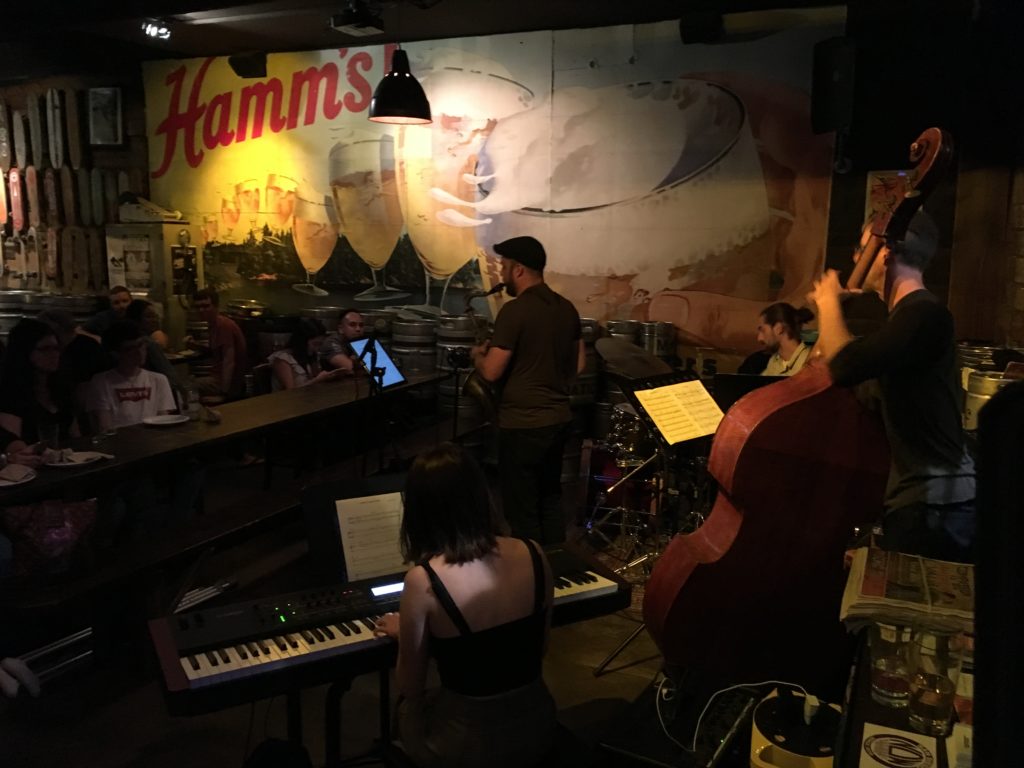
Photo by Melissa Miller.
During the set break Dove works the room, checking in with the musicians who have come to play. He rotates everyone in over the course of the next few hours. Those who play large instruments like drums, piano or standup bass use the house band’s. Other people break out their own instruments: electric bass, trombone, guitar, alto and tenor saxophones, trumpet, and vibraphone (which looks like a really big xylophone).
Artists who play or sing during Dove’s jazz jam know to come ready. On one recent Thursday, he called up vocalists back to back and they performed with the same lineup of musicians. The first, Valerie Forbess, told the band she’s going for a “sultry vibe” while wiggling her body slowly to the phrase. Everyone nodded. And then on the very next song, singer Katie Ward told them simply, “Let’s do it fast” and the musicians followed her lead as she bounced around the stage.
When Dove isn’t actively playing he stands off to the side of the stage, where kegs and bulk tomato sauce line the walls. He never stops chatting or signaling to the other musicians, both onstage and off. Like a line coach in baseball, Dove is the guy everyone’s eyes follow. Instead of stealing second base, the musicians know to speed up, cut in, wrap it up or any other number of coordinating movements.

Part of hosting his own jam includes running the bandstand like a classroom. Dove creates a challenging but supportive environment for musicians of all levels and backgrounds. “The session is open to everyone,” says Dove. “It’s a sacred place but it’s open to those who want to step to it.”
The other experienced players who come to Dove’s jam have embraced his positive attitude towards mentorship. Will Lyle, the house band bass player on a recent night, says that playing with newer musicians, “challenges me to really do my job. I can’t lose track. If someone does, I do something musically, not verbally, to help them get back on track.”
The supportive environment has even spread to other art forms. Katya Mezhova comes to draw while the musicians play. She sits in the front row and lays 4 boxes on the table – 3 boxes of pastels, some still pristine while others are smoothed and fingerprinted from use, and 1 box of peach cigars. Her hand flits across the paper without even the benefit of looking at what she’s drawing. She pauses when the music does. “I know she can capture my energy,” says Dove.
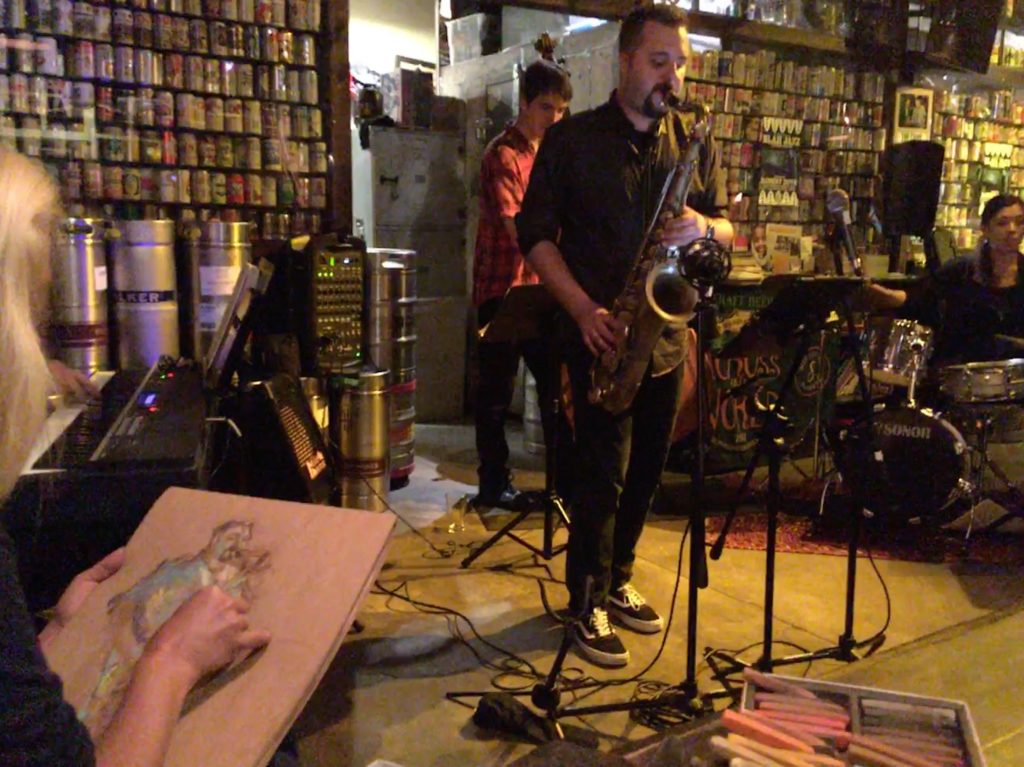
And it does take energy to host a jam session every week. Dove trades off between so-called straight-ahead jazz (the classics) on the second and fourth Thursdays of every month. On the first and third Thursdays it’s pocket jazz, which is funk and hip-hop inspired. Nick Caldwell, a 14 year old saxophone player explains it like this: “Straight ahead swings, pocket grooves.” Caldwell comes to play nearly every week and watches Dove intently, miming over his own instrument whenever Dove is playing.
“This is something that I’ve always wanted to do,” says Dove. “To foster a place for young musicians to listen to what can be and ask questions of the people here so they can get to where they want to be.” It’s how generations of jazz musicians learned to play. And thanks to Dove, it’s a tradition that is thriving in San Diego.
Gallery and header photos by Jay Dailey.
